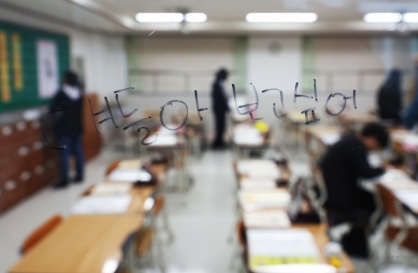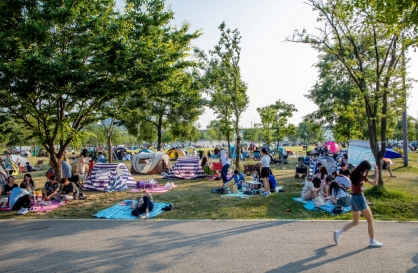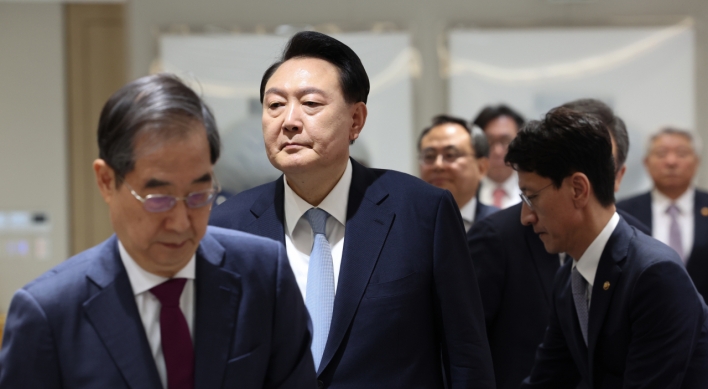Islam’s treasures back on display at New York’s Met
By Korea HeraldPublished : Oct. 27, 2011 - 19:22
NEW YORK (AFP) ― Masterworks of Islamic art will once again be on view at New York’s Metropolitan Museum, which next week reopens an exhaustive installation following an eight-year renovation.
New York’s biggest and most comprehensive art museum unveils on Nov. 1 its “New Galleries for the Art of the Arab Lands, Turkey, Iran, Central Asia, and Later South Asia.”
Refurbished at a cost of some $50 million, the 15 galleries will display 1,200 breathtaking works from the Middle East and North Africa meticulously arranged in a stunning new exhibition space.
“I think that what these galleries provide is a much better understanding of the complexity and also the interconnection between different cultures within Islamic art,” said curator Mechthild Baumeister.
“If you think about the art in these galleries, it spans 13 centuries,” she said. “It’s important to go back in history to understand the development of a culture, development of a style, interaction between cultures. Nothing exists in isolation.”
The museum’s galleries have been refurbished and re-envisioned to provide a show-stopping setting for the Metropolitan’s Islamic art collection, one of the largest anywhere in the world.
“The opening of these extraordinary new galleries underscores our mission as an encyclopedic museum and provides a unique opportunity to convey the grandeur and complexity of Islamic art and culture at a pivotal moment in world history,” said Met director Thomas Campbell.
The 15 new galleries trace the course of Islamic civilization over 13 centuries, covering a broad geographic expanse encompassing the Middle East, North Africa, Europe, and Central and South Asia.
“This new geographic orientation signals a revised perspective on this important collection, recognizing that the monumentality of Islam did not create a single, monolithic artistic expression, but instead connected a vast geographic expanse through centuries of change and cultural influence,” Campbell said.
“The public will find galleries filled with magnificent works of art that evoke the plurality of the Islamic tradition and the vast cross-fertilization of ideas and artistic forms that has shaped our shared cultural heritage.”
The art pieces were acquired by collectors in the United States between the last quarter of the nineteenth century and the early 1930s.
Many works came to the American market as exotic treasures as interest in and travel to the Middle East from Europe and the United States exploded, spawning a vast travel literature and piquing curiosity on both sides of the Atlantic about “The Orient.”
They cut across numerous domains including the world of science, such as a 13th-century astrolabe, the tool used by astronomers, navigators and astrologers of the era.
From the world of architecture, there is an example of Indian windows made from intricately carved wood. The world of sculpture is represented by Iranian statues, made from stucco, measuring a meter and a half tall.
There is beautiful Arabic calligraphy next to ancient Korans and ornate weaponry, including swords encrusted with rubies, silver and gold.
One gem is the recreation of the reception room of a large residence in Damascus, dating back to the 18th century.
Its marble floor has a geometric design with magnificent red velour pillows strewn throughout and its wooden walls are inscribed with verses from the Koran.
“It’s one of the highlights of the galleries,” Baumeister said. “It’s one of our biggest achievements.”
New York’s biggest and most comprehensive art museum unveils on Nov. 1 its “New Galleries for the Art of the Arab Lands, Turkey, Iran, Central Asia, and Later South Asia.”
Refurbished at a cost of some $50 million, the 15 galleries will display 1,200 breathtaking works from the Middle East and North Africa meticulously arranged in a stunning new exhibition space.
“I think that what these galleries provide is a much better understanding of the complexity and also the interconnection between different cultures within Islamic art,” said curator Mechthild Baumeister.
“If you think about the art in these galleries, it spans 13 centuries,” she said. “It’s important to go back in history to understand the development of a culture, development of a style, interaction between cultures. Nothing exists in isolation.”
The museum’s galleries have been refurbished and re-envisioned to provide a show-stopping setting for the Metropolitan’s Islamic art collection, one of the largest anywhere in the world.
“The opening of these extraordinary new galleries underscores our mission as an encyclopedic museum and provides a unique opportunity to convey the grandeur and complexity of Islamic art and culture at a pivotal moment in world history,” said Met director Thomas Campbell.
The 15 new galleries trace the course of Islamic civilization over 13 centuries, covering a broad geographic expanse encompassing the Middle East, North Africa, Europe, and Central and South Asia.
“This new geographic orientation signals a revised perspective on this important collection, recognizing that the monumentality of Islam did not create a single, monolithic artistic expression, but instead connected a vast geographic expanse through centuries of change and cultural influence,” Campbell said.
“The public will find galleries filled with magnificent works of art that evoke the plurality of the Islamic tradition and the vast cross-fertilization of ideas and artistic forms that has shaped our shared cultural heritage.”
The art pieces were acquired by collectors in the United States between the last quarter of the nineteenth century and the early 1930s.
Many works came to the American market as exotic treasures as interest in and travel to the Middle East from Europe and the United States exploded, spawning a vast travel literature and piquing curiosity on both sides of the Atlantic about “The Orient.”
They cut across numerous domains including the world of science, such as a 13th-century astrolabe, the tool used by astronomers, navigators and astrologers of the era.
From the world of architecture, there is an example of Indian windows made from intricately carved wood. The world of sculpture is represented by Iranian statues, made from stucco, measuring a meter and a half tall.
There is beautiful Arabic calligraphy next to ancient Korans and ornate weaponry, including swords encrusted with rubies, silver and gold.
One gem is the recreation of the reception room of a large residence in Damascus, dating back to the 18th century.
Its marble floor has a geometric design with magnificent red velour pillows strewn throughout and its wooden walls are inscribed with verses from the Koran.
“It’s one of the highlights of the galleries,” Baumeister said. “It’s one of our biggest achievements.”
-
Articles by Korea Herald








![[KH Explains] How should Korea adjust its trade defenses against Chinese EVs?](http://res.heraldm.com/phpwas/restmb_idxmake.php?idx=644&simg=/content/image/2024/04/15/20240415050562_0.jpg&u=20240415144419)











![[Today’s K-pop] Stray Kids to return soon: report](http://res.heraldm.com/phpwas/restmb_idxmake.php?idx=642&simg=/content/image/2024/04/16/20240416050713_0.jpg&u=)